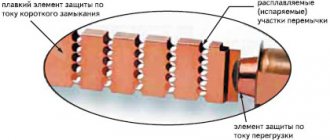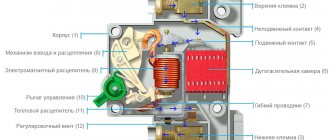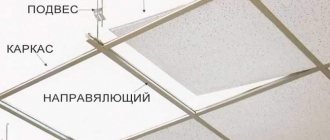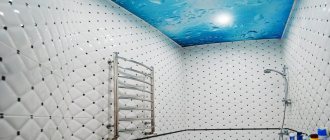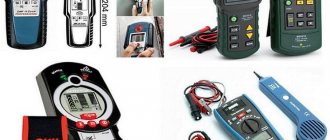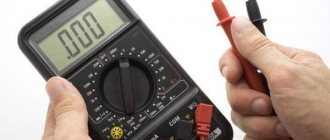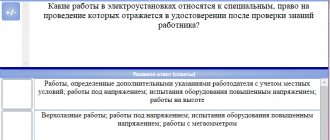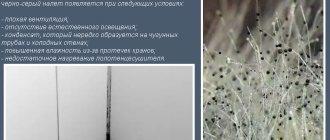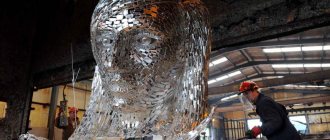Home |Construction |Warming up concrete in winter
Date: November 14, 2017
Comments: 0
Construction activities related to concreting monolithic structures are carried out throughout the year. In winter, builders have to solve a number of problems to ensure the strength of concrete and prevent freezing of the water entering the solution. In order to maintain a positive temperature of the solution and ensure optimal setting conditions, the concrete is heated. Let us consider in detail heating methods using electrical energy and infrared rays.
How concrete is heated in winter
With the onset of winter cold, builders have to face serious problems associated with the characteristics of the concrete solution. It contains gravel, Portland cement and sand with added water. Under normal conditions, the solution acquires operational characteristics within a month. However, water increases when it freezes, which can destroy the monolith.
During construction and repair work at low temperatures, concrete heating should be used to accelerate the hardening of the concrete solution.
The following techniques are used to maintain temperature:
- electric heating with a special cable. To increase the temperature, a PNSV wire is used, which is laid in advance along the structure to be poured;
- electric heating using a welding transformer. A cable is connected to the power source to heat the concrete using electrodes inserted into the array;
- heating using special formwork. Quick-detachable electric heating elements are installed in the standard elements of the panel formwork structure;
- infrared heating It is based on the use of directed infrared radiation, which increases the temperature of concrete;
- preheating the mixture. The solution is heated before pouring in such a way that during hardening it maintains a positive temperature;
- arrangement of special tents. A frame structure is constructed with a tarpaulin or polyethylene covering, inside which a heat gun operates.
The decision to use a specific heating method is made on the basis of preliminary calculations. By comprehensively analyzing all the factors and assessing the economic side of the issue, you can decide and make the right decision. Let's look at the features of each heating method.
Warming up concrete with PNSV heating wire
Pouring concrete in winter has its own difficulties. The main problem is the normal hardening of the solution, the water in which can freeze and it will not gain technological strength. Even if this does not happen, the low drying rate of the composition will make the work unprofitable. Warming up the concrete with a PNSV wire will help resolve this issue.
Electric heating of concrete in winter is the most convenient and cheapest way to achieve the desired hardness of the material. It is permitted by the standards of SP 70.13330.2012, and can be used when performing any construction work. After the concrete hardens, the wire remains inside the structure, so the use of cheap PNSV provides an additional economic effect.
Electric heating of concrete using PNSV cable
Using a wire for heating PNSV concrete, it is easy to ensure the optimal temperature for the solution to harden. This method is quite simple and involves laying a special PNSV wire, which heats up when low voltage is supplied from the step-down transformer.
This method works on a fairly simple principle. Before pouring, a wire is laid to warm up the concrete.
The technology of electric heating with a special wire has a number of advantages:
- provides high efficiency. A correctly selected and professionally laid heating wire can heat a concrete mass of increased volume;
- guarantees efficiency. Insignificant consumption of electrical energy allows you to avoid significant financial expenses and significantly reduces the estimated cost of work;
- preserves the structure of the monolith. When supply voltage is applied, cracks do not form in the cable laying areas, as well as air bubbles in the concrete mass heated by the wire;
- is universal. Electric heating can be used for monolithic structures made of ordinary concrete, as well as reinforced with steel reinforcement.
Despite serious advantages, the method has certain disadvantages:
- requires preparatory measures, during which a heating cable for concrete is laid. It is important to be careful when laying wire loops and adhere to the working diagram;
- requires the use of a special transformer. The power of the reducing equipment must ensure the ability to increase the temperature of the concrete mass to the required level.
A special cable is used, consisting of a conductive core and an insulating coating. The wire is selected based on calculations that take into account a number of factors:
- transformer supply voltage;
- diameter of the conductor;
- wire length.
It should be taken into account that the laying of warm-up loops is usually carried out in unpleasant weather
When laying the cable, it is important to comply with the following requirements:
- ensure the surface is clean and eliminate the possibility of damage to the cable;
- Avoid bending the cores and lay the wire evenly over the entire area.
It is important to ensure the required heating intensity:
- during the first two hours of heating, the speed should not increase by more than 10 degrees per hour;
- the operating temperature must be stable throughout the warm-up period;
- the cooling rate of the heated mass should not exceed 5 degrees Celsius per hour.
Purchase wire for heating concrete only from trusted manufacturers, and check for a certificate. The method of using a cable to heat a concrete solution is similar to the process of installing a heated floor.
Concrete heating temperature in winter
For each facility, a technological map is developed for heating using the selected method. The document indicates all technical and economic indicators, including heating temperature.
To correctly determine the temperature regime, many factors should be taken into account. Therefore, in each specific case, the operating temperature values will be individual.
However, according to SNiP, they should not exceed 80⁰С. At the end of the heat treatment, the cooling rate should be no more than 5⁰C per hour.
Careful temperature control is required during operation. The temperature is checked every half hour during the heating period, once every 12 hours during the cooling stage.
Warming up concrete with a welding machine
You can heat the solution using welding equipment and wire electrodes. The method has proven itself positively when pouring vertical structures in winter:
- column;
- walls;
- fencing.
Electrical heating of concrete can be carried out using electrodes that replace PNSV wires
The following can be used as conductive elements:
- steel reinforcement;
- wire with a diameter of 8–10 mm;
- metal plates.
The practical implementation of this method is simple:
- after concreting vertical structures, it is necessary to insert electrodes into the concrete mass;
- then you should use a cable to supply the supply voltage from the step-down transformer.
When heating vertical columns of small cross-section, it is sufficient to use one electrode. In this case, the concrete mixture will be heated by applying voltage to the reinforcement frame and a steel rod installed in the solution.
When performing work, it is important to comply with the following requirements:
- select the distance between the rods, which should be at least 60 cm depending on climatic conditions;
- regulate the supply voltage to achieve the required heating temperature of the concrete mass.
Advantages of the method:
- ease of practical implementation;
- Possibility of use at large facilities;
- accelerated installation of elements.
Electrode heating is easy to use and install, but it requires significant energy consumption
Weak spots:
- increased energy consumption;
- impossibility of reusing electrodes.
In this embodiment, water plays the role of a conductor of electrical energy.
How does ambient temperature affect the condition of concrete?
When creating monolithic structures, the strength gain is highly dependent on climatic conditions. The key factors affecting the hardening of concrete are humidity and temperature. A strong decrease in the former leads to increased evaporation of moisture and dehydration of the material. As a result, shrinkage cracks appear and strength gain slows down.
When analyzing the situation when it is possible to pour concrete, it is necessary to take into account the influence of temperature conditions on the processes occurring in concrete. The main chemical reaction during pouring is the hydration of the cement with water. The activity of water strongly depends on the degree of its heating. In hot weather, hardening of the mixture occurs with rapid loss of moisture and uneven heating of the layers. This has a bad effect on the condition of the surface - it cracks. Under moderate climatic conditions, concrete work gives the best results. The rate of hydration ensures optimal hardening conditions.
When working in cold weather, you need to take into account the consequences of water crystallization in the solution. This can be a significant slowdown in the speed of work, up to the impossibility of obtaining the required strength. Methods for heating concrete in winter are aimed at overcoming these difficulties.
Using heating formwork
Using special prefabricated formwork, in the panels of which electric heaters are mounted, it is possible to maintain a positive temperature of the concrete solution in winter.
Advantages of this method:
- the ability to quickly replace electric heaters, accessible from the outside of the structure;
- the versatility of the formwork, which can be used repeatedly at various sites;
- increased efficiency, allowing construction activities to be carried out when temperatures drop to minus 25 degrees Celsius;
- increased efficiency, which reduces energy costs and increases profitability;
- accelerated installation of formwork, the design of which allows you to connect panels and connect electricity in a limited time.
To heat concrete using this method, heating elements are installed in the formwork, which are replaced as needed.
Despite the complex of advantages, there are a number of disadvantages:
- increased cost of construction;
- problematic use on complex configurations.
The heating formwork method has proven itself positively on large construction projects.
Why is concrete protected?
The solution is prepared by combining sand, cement, and water in the required proportions. The negative temperature affects the hydration and hardening of the concrete composition. In winter, moisture freezes, which leads to a loss of structural strength and jeopardizes the further construction process. Developers are faced with an important task - how to warm up concrete in winter for a rational temperature regime for setting.
For pouring mortar in winter, the following temperature conditions exist:
- if concrete without additives - +10-20 °C;
- at air temperatures from -20 °C to +10 °C it will be necessary to organize heating of the concrete;
- if the thermometer drops below -20 °C, filling stops.
Options for heating the concrete mixture
There are many methods for heating concrete. This is a labor-intensive, expensive process, but it cannot be ignored.
Thermos
Warming up concrete in a thermos
Using this method is especially effective when protecting large structures from the cold. To mount a thermos around a structure, it is not enough to cover it with simple insulation. It is necessary to organize multi-layering or buy an insulated awning to create the optimal heating temperature for the concrete. In thirty-degree frosts, such insulation will not help, but it is possible to smooth out temperature fluctuations in this way.
To build a Thermos, use awnings or fabric made of Tarpaulin, PVC with eyelets, both single-layer and three-layer (insulated)
How does the process work?
Before pouring, the base of the formwork is heated to +25 °C. When laying the mortar, the temperature is increased to +50 °C. It should be taken into account: in this mode, the composition quickly sets and becomes inactive, so you need to work quickly. Then insulation begins: thermomats, insulated awnings, boards with roofing felt, corrugated cardboard in several folds, plywood or polystyrene foam. You can use wood shavings, sawdust or slag wool. First, insulate corners and thin elements, as they cool quickly.
Thermos is a way to warm up concrete in winter. It allows the internal heat of the solution to be used. For a more economical and correct thermos, you need to make a special thermomechanical calculation for a specific design. If heating of concrete is carried out in private construction, then you need to take a thermoregulating material with a reserve.
Warming up with electric thermomats
Heating concrete with electric thermomats
This method is not new; it has been used for more than 10 years. It is popular in the northern regions of the country, where temperature changes are common.
Thermoelectromats are insulation that works autonomously. You can automatically set the warm-up time and temperature. The device is quite economical to use. Warming up of concrete in winter occurs evenly.
This method has advantages:
- ease of use and care;
- automatic setting and control of temperature;
- connection to a regular network;
- easy connection of elements with each other;
- possibility of installing a large area of canvas;
- rapid achievement of results - the composition gains 70% strength in 12 hours.
Disadvantage: one of the most expensive methods of heating concrete, about 10 times more expensive than the cost of insulated awnings.
Air heating of concrete
The method of heating concrete with air belongs to the convection type and consists in gradually heating the system from hot air. For this purpose, a special hose with rubberized walls is used. The air comes from a generator connected to electricity or to equipment running on diesel fuel.
Air heating is used to pour concrete in an isolated place. A fan is used to enhance the passage of air flow. When warming up, it is recommended to use insulated, sealed materials to form a greenhouse over the structure.
It is undesirable to use diesel fuel heat guns; they emit carbon monoxide. It is preferable to use electric heating or gas-fueled appliances.
Electrode heating of concrete in winter
The current flows through a conductor - it is a solution that is heated from the inside. Peripheral heating is carried out through strip electrodes. They are made from roofing steel, cut into wide strips, and fixed to the formwork. Rod electrodes are cut from smooth steel reinforcement. The cross-section of the rods is 6 mm. After the solution has set, the reinforcement is not pulled out, but the tails protruding from the structure are simply cut off with a grinder.
This method of heating concrete is most effective when covered on top with three-layer insulated awnings.
Electrode heating of concrete in winter
Infrared winter heating of concrete
The method is based on the use of infrared heaters. They are positioned so that the radiation is directed at the solution poured into the formwork. The energy heats up the composition and it sets quickly.
This method can only be used in small areas. Infrared radiation cannot evenly heat a thick layer.
Induction heating of concrete
This method uses magnetic induction to produce heat. The field energy changes with its help and turns into thermal radiation transmitted to the surface of the treated solution. This process occurs in reinforcement bars or in formwork, if it is metal.
Induction heating is used in foundations with a closed loop. Moreover, the reinforcement in them should be dense, the reinforcement coefficient is 0.5. If it is not possible to mount metal formwork, then the structure should be wrapped with cable.
For maximum efficiency, we recommend covering the top of the concrete with three-layer awnings.
Infrared heating method
The targeted effect of infrared radiation allows the required area to be heated to the required temperature. The intensity of thermal radiation is adjusted by changing the spacing between the concrete surface and the infrared elements.
The technology of heating with thermomats is quite simple:
- additives are introduced into the solution to accelerate hardening;
- special mats are placed on the surface;
- supply voltage is supplied.
This method is used to heat concrete surfaces located in a horizontal plane.
Advantages of the technology:
- reduced level of energy consumption;
- ease of implementation;
- radiation intensity adjustment;
- possibility of heating through the formwork.
Heating in this way is carried out due to the influence of infrared radiation
Flaws:
- intensive evaporation of water from concrete, which should be protected from premature drying;
- increased costs for purchasing mats for heating a larger area.
Due to its increased efficiency, infrared technology is widely used in the construction industry.
Preheating the concrete mixture
The method of preheating concrete is one of the simplest. It provides for the following work:
- increasing the temperature of the mixture during the preparation stage;
- subsequent pouring of the heated composition.
A significant disadvantage of this method is the need to perform complex calculations that take into account:
- climatic factors;
- volume of concrete;
- filling duration.
If the temperature of the concrete is insufficient, it becomes necessary to heat it additionally using any of the available methods.
